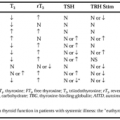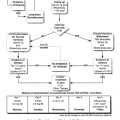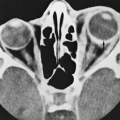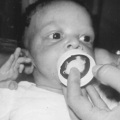LABORATORY EVALUATION OF THE PATIENT WITH GOITER
Part of “CHAPTER 38 – NONTOXIC GOITER“
The principles of diagnostic evaluation of the patient with non-toxic goiter are: (a) confirmation of eumetabolism; (b) establishment of the cause, insofar as doing so is cost effective; and (c) determination of the impact of the lesion on important non-thyroidal structures in the neck or upper mediastinum.
Confirmation of the euthyroid state is essential, regardless of the chronicity of the goiter and its historically eumetabolic nature. The development of hyperthyroidism in the setting of long-standing nontoxic goiter is frequent—thyrotoxicosis may develop in as many as one-third of patients with a large non-toxic goiter of 30 years’ duration. Nevertheless, in a large series of elderly subjects with hyperthyroidism,41 patients with long-standing goiter comprised <10% of the subject population. Because diffuse nontoxic goiter, and occasionally nodular goiter, can reflect the presence of Hashimoto thyroiditis, the hypothyroid state may emerge insidiously during the course of a “euthyroid goiter.” Tests of serum thyroid function in the patient with nontoxic goiter should include TSH measurement. In patients with normal serum T4 concentrations, mild T3 toxicosis should be ruled out. Thyrotropin-releasing hormone testing is only rarely required to demonstrate euthyroidism in goitrous patients with nondiagnostic serum free T4 and total T3 values and low, but not fully suppressed, serum TSH levels.
Stay updated, free articles. Join our Telegram channel

Full access? Get Clinical Tree







